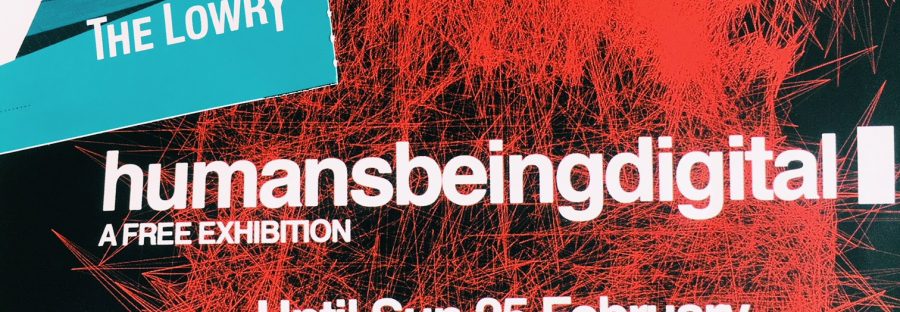Review: humansbeingdigital @ The Lowry
How far away are we from dystopia? It’s a question we should be pondering now more than ever before with Sophia the Robot recently being granted citizenship of Saudi Arabia and self-driving trucks currently delivering fridges to Californians.
Black Mirror proved to be a phenomenon because it took the shape of a Magic 8 Ball miniseries as opposed to a far-fetched science-fiction on more than one occasion and eerily captured certain aspects of life that have since become familiar to us. Now imagine a Black Mirror exhibition – and you may well find yourself somewhere similar to humansbeingdigital at the Lowry.
Here, nine artists explore the sinister gap between humans and machines in a bid to show new perspectives on life now, in the near future and at the end of the world.
Upon entering the room, the first piece immediately stopped me in my tracks; a contraption of slowly turning machine cogs and dark brown hair by husband and wife duo U_Joo+LimheeYoung. It reminded me of the horror stories everyone’s GCSE technology teacher told about having loose hair near the machines. Perhaps it’s actually a nod to Sophia in Saudi Arabia, and humans and robots working together. Perhaps it’s a socialist statement and represents the labour force being treated like machines. Regardless, it makes the cogs in your own brain turn – are we really that different from machines?

My favourite piece takes the form of A Hipster Bar by Max Dovey, where the bouncer is a barrier and the facial recognition system decides whether or not you are ‘hipster’ enough to enter. Perhaps it is only my favourite piece because it granted me access (90% hipster – got to love a baker boy hat). Much like the ‘Nosedive’ episode of Black Mirror, where others rate you on everything you do and higher ratings allow certain privileges, this installation links back to how image-obsessed we are, and how we often judge people through a screen.

Backdoored reminds us that we’re always being watched, and as more and more devices surround us, our lives are becoming more and more surveilled. Nye Thompson has created an algorithm which scours live footage from internet-connected security cameras all over the world. From a furnace in a pet crematorium, to people monitoring their sleeping children, to mundane shots of recycling bins, all the images show things we feel we need to be keeping an eye on. Yet the devices we use to make us feel safer may actually be making us more vulnerable.

Of course, any exhibition which doesn’t display centuries-old oil paintings in gold baroque frames can pose the question, “is this art?” It’s true that anybody could set up some surveillance screens in a dark room, for example. Yet every single piece in this exhibition prompts an emotional response, whether it’s a giggle or a gasp. And THAT is art.


